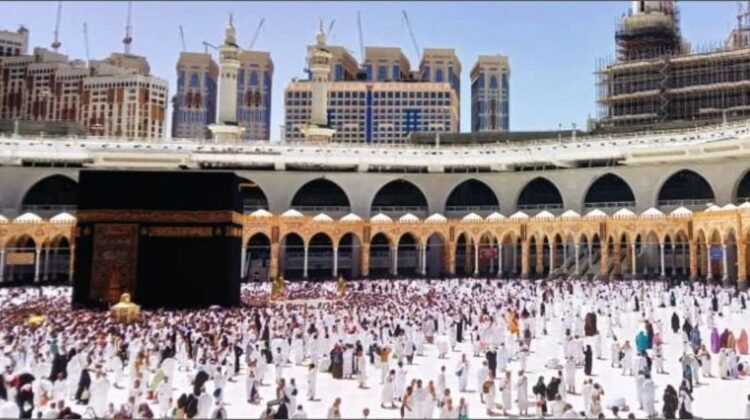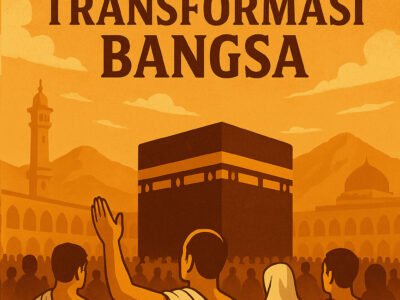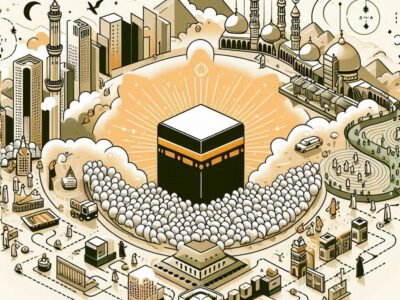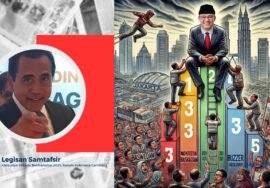
Hajj: A Broad Path of Transformation Toward Golden Indonesia 2045 (Part 1)
But All of This Requires Commitment from All Parties — It Cannot Be Mere Empty Talk Without Realization
What does Hajj have to do with Indonesia’s transformation, especially in achieving Golden Indonesia 2045? It may seem far-fetched. But in fact, this is truly a broad and clear path that the Prabowo administration and the Indonesian people can take toward Golden Indonesia 2045.
Hajj is a multidimensional and multifunctional event. From the perspective of the pilgrims, Hajj is worship, the fifth pillar of Islam. But from the perspective of industry, Hajj drives an international-scale business (aviation, hospitality, food and beverage, livestock, fisheries, agriculture, textiles, transportation, and education), creating countless job opportunities. Hajj is even a reflection of human civilization itself. This event has been taking place for centuries and will continue until the end of time.
What makes it even more special is the significance of Hajj for the Indonesian government and people. Indonesia has the largest Hajj quota in the world — over 220,000 pilgrims, including 17,000 under the special Hajj scheme (ONH Plus). Currently, six million people are on the waiting list. Calculate the spending: if each pilgrim spends an average of IDR 100 million, that amounts to IDR 22 trillion. That doesn’t include Umrah, which takes place throughout the year and is expected to involve around 2 million people in 2024 — with an average spending of IDR 30 million per person, that totals another IDR 60 trillion.
With a total economic circulation of around IDR 80 trillion, Hajj is a spectacular event. Therefore, Indonesia must see Hajj and Umrah not only as acts of worship fulfilling a religious obligation, but also as a massive economic and industrial opportunity. Consequently, Hajj must not only be viewed as an expenditure, but more importantly, as an investment.
Hajj as an Opportunity for Domestic Industry
This is clear and easy to understand: an event that circulates IDR 80 trillion is obviously a great opportunity to stimulate the domestic economy and industry. But the real question is: how much of this economic activity benefits our domestic industries? How many goats have we exported for sacrificial purposes in the Holy Land? How many million pieces of ihram cloth? How many prayer rugs, tons of dory fish, beef rendang, fruit, and vegetables? How many bus drivers? How many suitcases were manufactured for pilgrims? How much sacrificial meat is returned to us? How many hotel rooms were booked in Indonesia-owned hotels? How many tickets were issued for Indonesian airlines?
As a sovereign entity, the government must calculate how this benefits the Indonesian economy. And every prerequisite for this benefit must be pursued with full effort by all parties — especially the government, state-owned enterprises (BUMN), and the private sector. The government must be able to bargain effectively to secure these benefits.
Efforts toward this will naturally stimulate the domestic economy: job creation, growth in agriculture and livestock sectors, the textile and transportation industries, and improved public nutrition from the return of sacrificial meat from the Holy Land. There are countless opportunities that can arise from this grand Hajj project.
Hajj as a Means of Enhancing National Human Capital
Hajj must also be used as a tool to improve the quality of Indonesia’s human capital. It is widely recognized that spiritual strength forms the foundation of the best human attitudes, which are essential for achieving performance and success in all areas of development.
Hajj rituals must be understood and elaborated to produce a belief system that anchors the principles of professional success. Thus, through Hajj, the development of this belief system and the professional attitude it supports must be enhanced. In this way, Hajj becomes a strategic ritual for improving the quality of national human capital.
If this is successful, the development of the nation’s social and spiritual capital can be achieved at a low cost, because the Hajj is self-funded by the pilgrims. The government only needs to facilitate its implementation while immersing pilgrims in an understanding that leads to personal transformation.
Of course, understanding from the perspective of Islamic jurisprudence (fiqh) must also be deepened to ensure that the pilgrimage is valid and accepted. However, the meaning and outcomes of Hajj must also be expanded to include relevance to professional and social life — because that is what will bring the pilgrims closer to a post-Hajj state of mabrur (accepted pilgrimage), reflected in real improvements in family, community, and national life. The cumulative effect of these improvements ultimately contributes to national progress. This is Hajj as an investment in national human capital.
Hajj as a Broad Path to National Transformation toward Golden Indonesia 2045
Thus, the implementation of Hajj and Umrah can become a collective movement among the wider public to transform toward a more qualified and professional society. From the industrial perspective, Hajj will trigger national economic activity. From the human resource development perspective, Hajj will produce Indonesian citizens whose attitudes support national development.
This means that Hajj is a shared transformation of society — from Sabang to Merauke. And because Hajj and Umrah take place year-round, this transformation movement will remain active throughout the year. The challenge is simply how to make this vision truly manifest. This shared vision must be conveyed and actively pursued.
The Minister of Religious Affairs under the Prabowo Subianto administration, Prof. Dr. Nasaruddin Umar, during the opening of the 2025 National Hajj Coordination Meeting (April 23), emphasized that the government and all its ranks will serve Hajj pilgrims wholeheartedly — without the intention of self-promotion — and will innovate, synergize, and be accommodating to the elderly and disabled. He also stressed that the measure of an accepted Hajj (mabrur) is visible in national improvements after the pilgrims return. Therefore, innovations in Hajj implementation that promote mabrur outcomes must be pursued, and this must be a national effort.
This signals that Hajj is seen as a force for national development. Indeed, that is the true nature of Islamic acts of worship — to support and inspire professional success and national progress.
But all of this requires commitment from all parties. It cannot be mere rhetoric without realization. The entire government apparatus, pilgrims, and citizens must work hand in hand. As a result, the transformation toward Golden Indonesia 2045 will no longer be just a government program — it will become a movement of the entire people.
Wallahu a’lam bish-shawab (Allah knows best what is right).
Dr. Legisan Samtafsir, M.Ag.
Founder of the Indonesia Mabrur Movement, Chairman of GERNAS Indonesia Gemilang







